#Shlisselburg
Explore tagged Tumblr posts
Text

Schlüsselburg, Leningrad rg., Russia
#russia#shlisselburg#leningrad oblast#leningrad rg#leningradskayaoblast#leningradskaia oblast#leningradskaja oblast#travelphotography#water#riverside#river#rivershore#riverwalk#neva#bridge
52 notes
·
View notes
Note
Cool name choice
Thank you :3333
0 notes
Text










Women’s History Meme || Virtually Unknown Women (6/10) ↬ Vera Nikolayevna Figner (1852 – 1942)
Vera Figner was supposed to die in 1884. A tsarist court declared it; Vera herself expected and even welcomed it. Although she would have been only the second woman in more than a century to die on the scaffold by decree of the Russian state, her notoriety and prominence within the terrorist group the People’s Will was such that few people expected leniency for the condemned criminal. If the sentence decreed by an imperial military tribunal in October 1884 had stood, newspapers across Europe would have noted Vera Figner’s execution and most likely recounted the dramatic and seemingly tragic turns that the notoriously beautiful young woman’s life had taken in the previous decades. Journalists would have found it hard to resist regaling their readers with the details of this beguiling revolutionary’s life, as it poetically seemed to symbolize the fervor, promise, idealism, and desperation of a generation of Russian radicals. In childhood Figner seemed destined for a life of privilege as a member of the Imperial Russian nobility. But amid the turbulent decade in which she came of age, Vera exchanged privilege for political radicalism; abandoned legal, professional aspirations for a life in the revolutionary underground; and foreswore marital ties for a desperate plot to assassinate the Russian tsar. She certainly was not alone in her beliefs, her dedication, or her willingness to die for her cause, but she was exceptional for the seamless manner in which her life and commitment personified her age of political radicals and exemplified the ideals to which her generation aspired. In the late 1870s and early 1880s, Vera Nikolaevna Figner was at the center of a movement and a series of events that transformed the political landscape in Russia and ultimately changed the empire of the tsars irrevocably. If she had died in 1884, Vera Figner’s life would be significant for what it conveys about Russian noblewomen who came of age in the twilight of the era of serfdom and for what it indicates about those among them who pursued education as a means of intellectual and moral autonomy and a path to economic independence. Even if it had ended when she was thirty-two, Vera’s life would have historical importance for the insight it provides into the motivation that drove such a significant number of young, privileged Russians to embrace terrorism as a solution to the country’s ills. As a leader of the revolutionary organization the People’s Will, Vera Figner helped to change the course of Russian history through the 1881 assassination of the most powerful man in the country, the Tsar Liberator, Alexander II. Yet Vera Figner did not die in 1884. After Alexander III, the son and heir of the man she helped to murder, commuted her death sentence to life in prison at hard labor, her life continued, as did her revolutionary influence. Although the tsarist state resolved to bury her alive in Shlisselburg Fortress, a notorious prison known as the Russian Bastille, Vera’s two decades of incarceration became an essential element of her revolutionary identity and infused the subsequent narrative of revolution both before and after 1917. Vera survived Shlisselburg; in fact, she lived for almost six decades after her death sentence was declared and survived the regime that she had sought to topple. — The Defiant Life of Vera Figner: Surviving the Russian Revolution by Lynne Ann Hartnett
#women's history meme#vera figner#russian history#european history#women's history#history#19th and early 20th#nanshe's graphics
24 notes
·
View notes
Text
SAINTS&READING: THURSDAY, SEPTEMBER 12, 2024
august 30_september 12
VENERABLE CHRISTOPHER OF PALESTINF ( 6th.c.)

Saint Christopher, a Roman, lived during the sixth century. He was tonsured into monasticism at the monastery of Saint Theodosius (January 11) in Palestine, near Jerusalem. The accounts of Abba Theodulus about Saint Christopher are contained in chapters 105 and 234 of the book The Spiritual Meadow (Limonarion)
Once Saint Christopher went to Jerusalem to worship at the Holy Sepulchre of the Lord and at the Life-Creating Cross. At the gateway of the church he beheld a monk not moving from the spot. Two ravens flew before his face. Saint Christopher discerned that these were demons, which held the monk back from entering the church.
He asked the brother: “Why do you stand at the gate and not enter?” The brother answered: “Pardon me, Father, but within me struggle two thoughts. One says: go and venerate the Venerable Cross. The other says: don’t go in, make some excuse, and come to venerate the Cross another time.” Then Saint Christopher took the brother by the hand and led him into the church. The ravens immediately disappeared, and the brother venerated the Cross and the Holy Sepulchre. Saint Christopher told this story to someone who was distracted by his duties and neglected his prayers.
By day Saint Christopher fulfilled his monastic obedience, and by night he retired to a cave, where at an earlier time Saint Theodosius and other Fathers had prayed. At each of the 18 steps leading into the cave, he made 100 prostrations, and spent the greater part of the night in prayer, before the semantron was sounded for Orthros. He spent eleven years doing this. One time, descending into the cave, he beheld a multitude of lamps in it. Two radiant youths were tending them.
“Why have you put the lamps here so that I cannot enter in and pray?” asked the monk.
“These are the lamps of the Fathers,” they replied.
“Tell me, does my lamp burn or not?”
They said, “Pray, and we will light it.”
“Pray?” he said, “What have I been doing up to now?”
Then the saint said to himself: “Christopher, if you wish to be saved, greater effort is needed!”
At dawn he went from the monastery to Mount Sinai, taking nothing with him. The monk toiled there for fifty years at great exploits. Finally, he heard a voice saying, “Christopher! Go to the monastery where you struggled earlier, so that you might rest there with your Fathers.”
Translation of the relics (1724) of St. Alexander Nevsky (1263).
TRANSLATION OF THE RELICS (1724) OF ALEXANDER NEVSKY (1263)

The Holy Prince Alexander Nevsky (in monastic schema Alexis) died on the return journey from the Horde at Gorodtsa on the Volga, on November 14, 1263, and on November 23, 1263 he was buried in the Cathedral Church of the Nativity Monastery in the city of Vladimir.1
Veneration of the Prince began right at his burial, where a remarkable miracle took place. The saint extended his hand for the prayer of absolution (a written document placed in the coffin). Great Prince John (1353-1359), in his spiritual testament written in the year 1356, left to his son Demetrius (1363-1389), the future victor of the Battle of Kulikovo, “an icon of Saint Alexander.” The incorrupt relics of the holy Prince were uncovered, because of a vision, before the Battle of Kulikovo in the year 1380, and then they were sent forth for a local celebration.
Russian commanders asked for the intercession of the holy Prince, glorified by his defense of the Fatherland, in the following times: On August 30, 1721 Peter I, after a lengthy and exhausting war with the Swedes, concluded the Nishtad Peace. On this day it was decided to transfer the relics of the holy Prince Alexander Nevsky from Vladimir to the new northern capital, Peterburg, on the banks of the Neva. Removed from Vladimir on August 11, 1723, the holy relics were greeted at Shlisselburg on September 20 of that year and remained there until 1724. On August 30, they were placed in the Trinity Cathedral of the Alexander Nevsky Lavra, where they now rest in Saint Petersburg. By an edict on September 2, 1724 a feastday was established on August 30.2
Archimandrite Gabriel Buzhinsky (later Bishop of Ryazan, + April 27, 1731) compiled a special service in remembrance of the Nishtad Peace, combining with it a service to Saint Alexander Nevsky.
The name of the Defender of the borders of Russia and the Patron of Soldiers is famous far beyond the borders of Russia. The numerous temples dedicated to Saint Alexander Nevsky bear witness to this. The most famous of them: the Patriarchal Cathedral at Sofia, the Cathedral church in Talinin, and a church in Tbilisi. These churches are a pledge of friendship of the Russian National-Liberator with brother nations.
1 There is now a memorial to the holy prince at the Cathedral Church of the Nativity Monastery. Another memorial is in the city of Pereslavl-Zalessk.
2 In 1727, the feast was discontinued because of secular matters, which involved clique struggles at the imperial court. In 1730, the Feast was again re-established.
UNCOVERING OF THE RELICS OF ST DANIEL , PRINCE OF MOSCOW ( 1652)

The Holy Prince Daniel of Moscow, who was the son of Saint Alexander Nevsky (November 23 & August 30), went to the Lord on March 4,1303. On August 30, 1652 his relics were uncovered and found to be incorrupt. Later, they were transferred to the church dedicated to the Holy Fathers of the Seventh Ecumenical Council. Now they rest in the Danilov Monastery in Moscow. Many of the faithful are healed of their infirmities when they pray at his shrine.
Source: All texts Orthodox Church in America_OCA


2 Corinthians 7:1-10
1 Therefore, having these promises, beloved, let us cleanse ourselves from all filthiness of the flesh and spirit, perfecting holiness in the fear of God. 2 Open your hearts to us. We have wronged no one, we have corrupted no one, we have cheated no one. 3 I do not say this to condemn; for I have said before that you are in our hearts, to die together and to live together. 4 Great is my boldness of speech toward you, great is my boasting on your behalf. I am filled with comfort. I am exceedingly joyful in all our tribulation. 5 For indeed, when we came to Macedonia, our bodies had no rest, but we were troubled on every side. Outside were conflicts, inside were fears. 6 Nevertheless God, who comforts the downcast, comforted us by the coming of Titus, 7 and not only by his coming, but also by the consolation with which he was comforted in you, when he told us of your earnest desire, your mourning, your zeal for me, so that I rejoiced even more. 8 For even if I made you sorry with my letter, I do not regret it; though I did regret it. For I perceive that the same epistle made you sorry, though only for a while. 9 Now I rejoice, not that you were made sorry, but that your sorrow led to repentance. For you were made sorry in a godly manner, that you might suffer loss from us in nothing. 10 For godly sorrow produces repentance leading to salvation, not to be regretted; but the sorrow of the world produces death.
Mark 1:29-35
29 Now as soon as they had come out of the synagogue, they entered the house of Simon and Andrew, with James and John. 30 But Simon's wife's mother lay sick with a fever, and they told Him about her at once. 31 So He came and took her by the hand and lifted her up, and immediately the fever left her. And she served them. 32 At evening, when the sun had set, they brought to Him all who were sick and those who were demon-possessed. 33 And the whole city was gathered together at the door. 34 Then He healed many who were sick with various diseases, and cast out many demons; and He did not allow the demons to speak, because they knew Him. 35 Now in the morning, having risen a long while before daylight, He went out and departed to a solitary place; and there He prayed.
#orthodoxy#orthodoxchristianity#easternorthodoxchurch#originofchristianity#spirituality#holyscriptures#gospel#bible#wisdom#faith#saints#holiness#jesus christ
5 notes
·
View notes
Text
Page 120
have contact with them soon, and I’m getting psychologically prepared for it.
I don’t feel drawn to places of power in St. Petersburg, those that I visited, and even those that I didn’t visit, I don’t feel drawn to them. I feel drawn to visit all the cities of St. Petersburg county and all the towns around the city. Sestroretsk, Pushkin, Pavlovsk, Kronstadt, Shlisselburg, Vsevolozhsk, Lomonosov. All these towns have something left from the old, ancient times, and naturally, I want to see and feel all of it. Those ancient burial places and old towns in general, I really want to research and study and see any buildings and structures that are left. I’ll decipher it, and some information will come to me. I want to see what I will feel there; I want to count these towns and draw them on a map. I want to see how many of those fit into the ring around St. Petersburg. It is all very interesting, of course. As for places of power, I have this practical interest. I have all these precious stones and rings that I always wanted to make, and of course, I’d like to visit those places of power now with all those charged objects and see what happens. Because now, I have all these items that turn on the person and turn off his mind, and I am very curious to see how we will feel those places of power and how they influence us. This is just a test. And when I do it, I will, of course, explain and decipher everything for you.
So first, we research, and then I will let you do it practically. To those who have an opportunity to discover places of power in your city and your country, I will explain how to find them. And to those of you who can come to St. Petersburg, I will also explain how to do it in St. Petersburg, but for now, please calm down your egos, minds, and personal interests while I’m preparing you, polishing your mind so that you have the correct perception of everything. I’m telling you my story. Read this story, and you will have a deeper understanding of the truth. It will open you up a lot. Everything will go as it should.
0 notes
Text
Argunov Nikolai (1770-1828) RETRATO DE N. A. GRIBOVSKAYA 1795 Tamaño - 67x53 Material - lona Técnica - óleo Número de inventario - Zh-299 Recibido de la colección de N.A. Gerasimov.1964 El retrato de Natalya Akimovna Gribovskaya fue pintado por el joven y talentoso artista Nikolai Ivanovich Argunov simultáneamente con el retrato de su esposo Adrian Moiseevich Gribovsky, con motivo del nombramiento de este último para el puesto de Secretario de Estado de la emperatriz Catalina II.
Argunov Nikolai (1770-1828) RETRATO DE N. A. GRIBOVSKAYA 1795 Tamaño - 67x53 Material - lona Técnica - óleo Número de inventario - Zh-299 Recibido de la colección de N.A. Gerasimov.1964
El retrato de Natalya Akimovna Gribovskaya fue pintado por el joven y talentoso artista Nikolai Ivanovich Argunov simultáneamente con el retrato de su esposo Adrian Moiseevich Gribovsky, con motivo del nombramiento de este último para el puesto de Secretario de Estado de la emperatriz Catalina II. El formato de un pequeño retrato de cámara le permite transmitir el mundo interior y el carácter de Gribovskaya. La pose de la modelo en un giro de tres cuartos con el rostro vuelto hacia el espectador es tranquila y sobria. La joven va vestida a la moda de la época con un vestido de cintura alta. El escote de encaje está adornado con un pañuelo transparente que cubre el busto. El color de la obra se basa en las mejores combinaciones de lila y oro y se distingue por la sofisticación. La luz deslizante cae sobre la figura de la izquierda y disuelve la intensidad de los tonos de color individuales. Ilumina el rostro de la heroína y resplandece sobre el adorno del chal bordado con hilo dorado. Los pliegues texturizados de la ropa dan a la imagen un ritmo caprichoso. El suave desvanecimiento del esquema de color, el ligero desenfoque del contorno, ayudan a crear la imagen de una mujer joven avivada por el sentimentalismo. La estructura emocional del modelo se caracteriza por la suavidad y la feminidad. SOBRE EL. Gribovskaya se distinguió por su belleza, fue una buena ama de casa y una esposa amorosa. Pero se sabe que también podía mostrar un carácter fuerte: las Notas sobre Catalina la Grande de su esposo mencionan sus esfuerzos para liberarlo del encarcelamiento en las fortalezas de Peter y Paul y Shlisselburg. Debido a estas circunstancias, Natalya Akimovna vivía alejada de la vida de la capital y pasaba principalmente su tiempo en las propiedades de Vishnevchik en la provincia de Podolsk y Shchurovo cerca de Kolomna. El retrato procede de la colección de N.N. Guberti, bisnieto de N.A. Gribovskaya a través de la hija de Elena Adrianovna. La claridad de la composición, la claridad del dibujo del retrato, indican los rasgos característicos del estilo del clasicismo, y en términos de sofisticación pictórica, este trabajo es uno de los mejores en el trabajo de Nikolai Argunov.
Información e imagen de la web de la Galería Tretyakov.
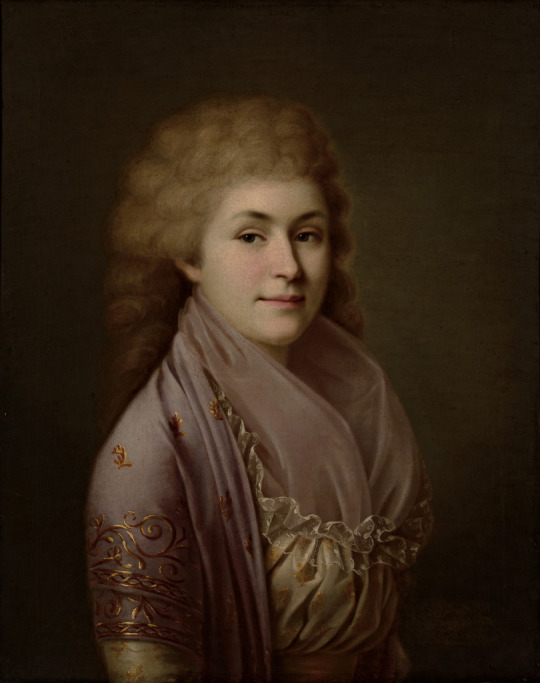
0 notes
Text
Список отделений банков и банкоматов. Ищите информацию по этому вопросу в сети ? Не можете найти ? На нашем веб ресурсе Вы найдете актуальный список отделений банков и банкоматов, а также узнаете про выгодные предложения от банков. Мы ждем вас у нас на сайте, изучайте https://rubanki.com/bankomaty/bankomaty-alfa-banka/bankomaty-alfa-banka-shlisselburg/
0 notes
Photo

Крепость Орешек. Головина башня, XVI в. . #проект_365_фото #проект365_dyadyavasya 126/365 . #russia #leningradregion #travel #travelphotography #russia_traveling #fortress #shlisselburg #ladoga #ladozhskoeozero #tower #history #castle (at Орешек (крепость)) https://www.instagram.com/p/CdOxoWYL4Sj/?igshid=NGJjMDIxMWI=
#проект_365_фото#проект365_dyadyavasya#russia#leningradregion#travel#travelphotography#russia_traveling#fortress#shlisselburg#ladoga#ladozhskoeozero#tower#history#castle
8 notes
·
View notes
Photo

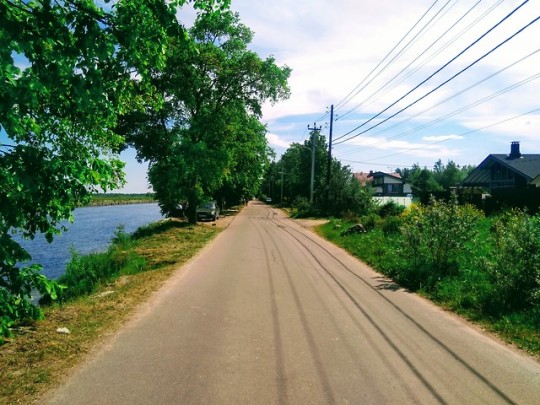
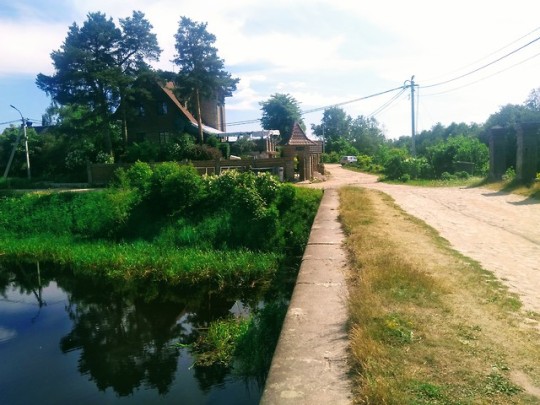

Town on the coast of lake Ladoga
Shlisselburg, Leningrad Region - 06/16/2018
3 notes
·
View notes
Text
Ekaterina Vasilyeva: On the Neva
Ekaterina Vasilyeva: On the Neva
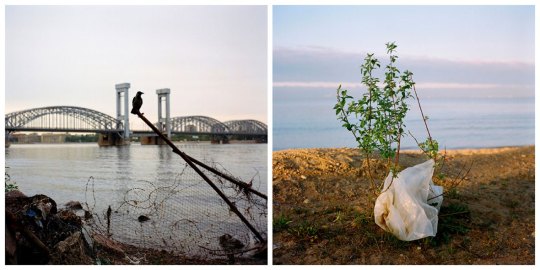
A River for People: What Makes the Neva Tick? Ekaterina Vasilyeva Republic November 29, 2019
All my photo projects are somehow connected with nature, with long walks and studying the environment. I think that without a clear understanding of nature’s role in our lives, we to some extent deprive ourselves of support.
My project The Neva: A River for People, People for the Riveris an attempt to find…
View On WordPress
#Ekaterina Vasilyeva#Ingria#Julius Ailio#Kirovsk#Lake Ladoga#Neva River#Neva smelt (koryushka)#Nevsky Shipyard#Otradnoye#Peter the Great#photo reportage#Republic (website)#Rybatskoye#Shlisselburg
0 notes
Text
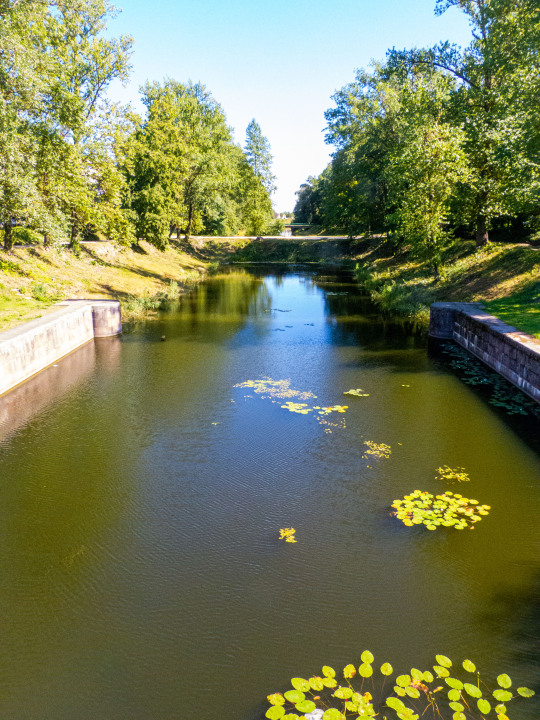
Schlüsselburg, Leningrad rg., Russia
#russia#shlisselburg#leningrad oblast#leningrad rg#leningradskayaoblast#leningradskaia oblast#leningradskaja oblast#travelphotography#water#riverside#river#rivershore#riverwalk#neva#bridge
53 notes
·
View notes
Photo
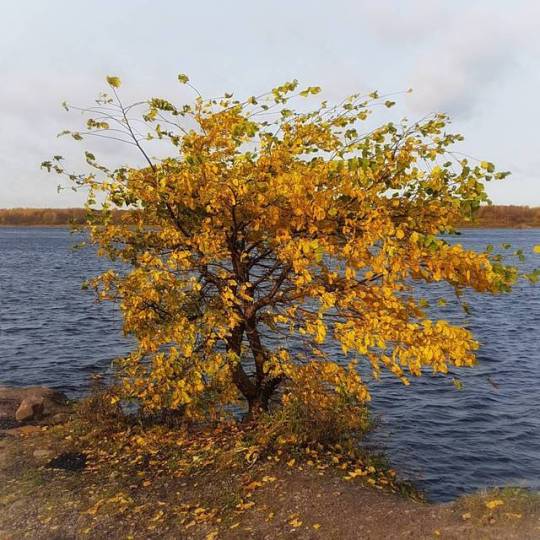
#gm Темная вода Невы, желтый ковер под ногами, осень во всей своей красе. Середина октября, однако. Чем планируете заниматься в этот вторник? #осень #autumn #river #october #neva #shlisselburg #Шлиссельбург #нева #река #nature #morning #доброеутро #water #blackwater #vcso #vscocam (at Shlisselburg)
#vscocam#шлиссельбург#река#autumn#осень#blackwater#neva#vcso#доброеутро#october#river#water#shlisselburg#morning#нева#nature#gm
1 note
·
View note
Photo
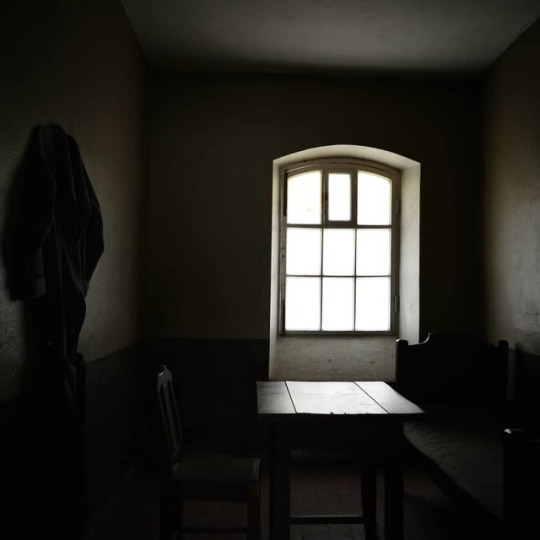
Пожалуй, одним из самых впечатляющих зданий в Шлиссельбургской крепости, является Старая тюрьма. В этих стенах царит атмосфера одиночества и безнадёжности, которую испытывали её заключённые. #спб #saintpetersburg #stpetersburg #впитережить #spb #питер❤️ #питер #впитерегулять #санктпетербург #шлиссельбург #тюрьма #камера #shlisselburg #prison #prisoncell #крепость #крепостьорешек #fortress #экскурсия #excursion (at Крепость Орешек) https://www.instagram.com/p/ByezYG9BvgN/?igshid=pleydznhriox
#спб#saintpetersburg#stpetersburg#впитережить#spb#питер❤️#питер#впитерегулять#санктпетербург#шлиссельбург#тюрьма#камера#shlisselburg#prison#prisoncell#крепость#крепостьорешек#fortress#экскурсия#excursion
0 notes
Text
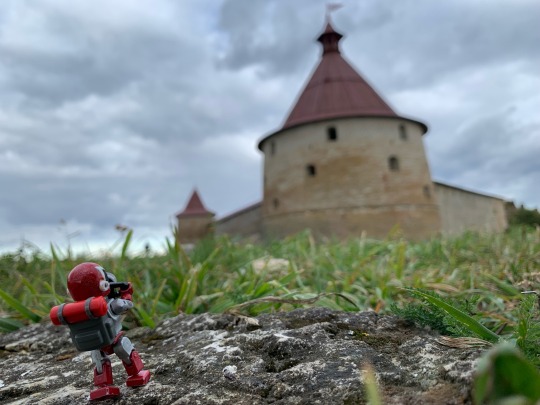
10 notes
·
View notes
Photo
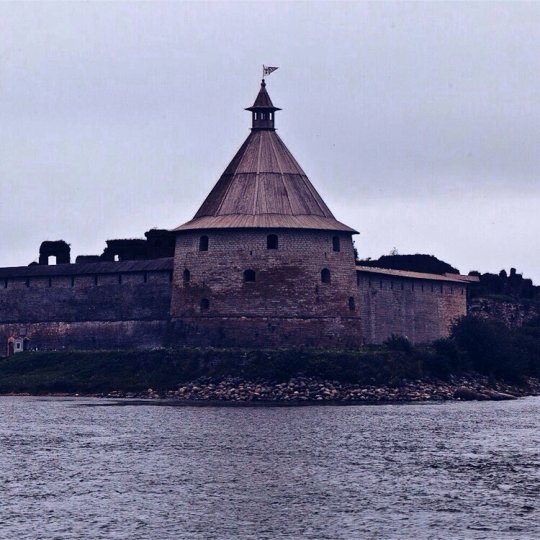
#shlisselburg #autotrip #lake #euro #russia #instarussia #ig_shlisselburg #ig_russia #cloud #cloudporn #elements #отпуск #отдых #шлиссельбург #север #vscocam #vsco #vscotrip #vacation #ig_world #trip #architecture #archilovers #details #stone #north #building #travel #gorbachev_al_vl (at Shlisselburg)
#vsco#shlisselburg#elements#ig_russia#russia#architecture#euro#отдых#отпуск#details#cloud#north#travel#instarussia#ig_shlisselburg#cloudporn#vacation#autotrip#lake#vscotrip#gorbachev_al_vl#север#trip#vscocam#archilovers#building#ig_world#stone#шлиссельбург
1 note
·
View note